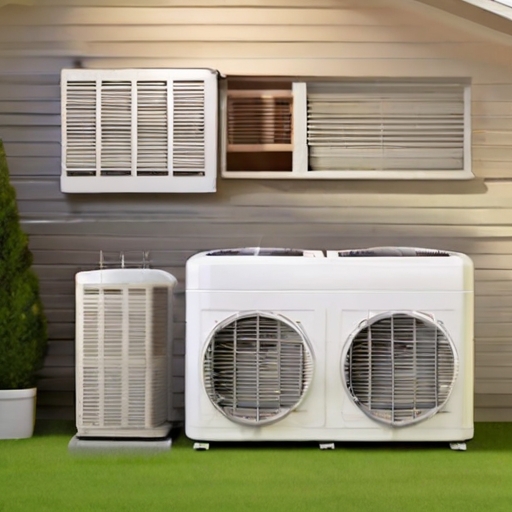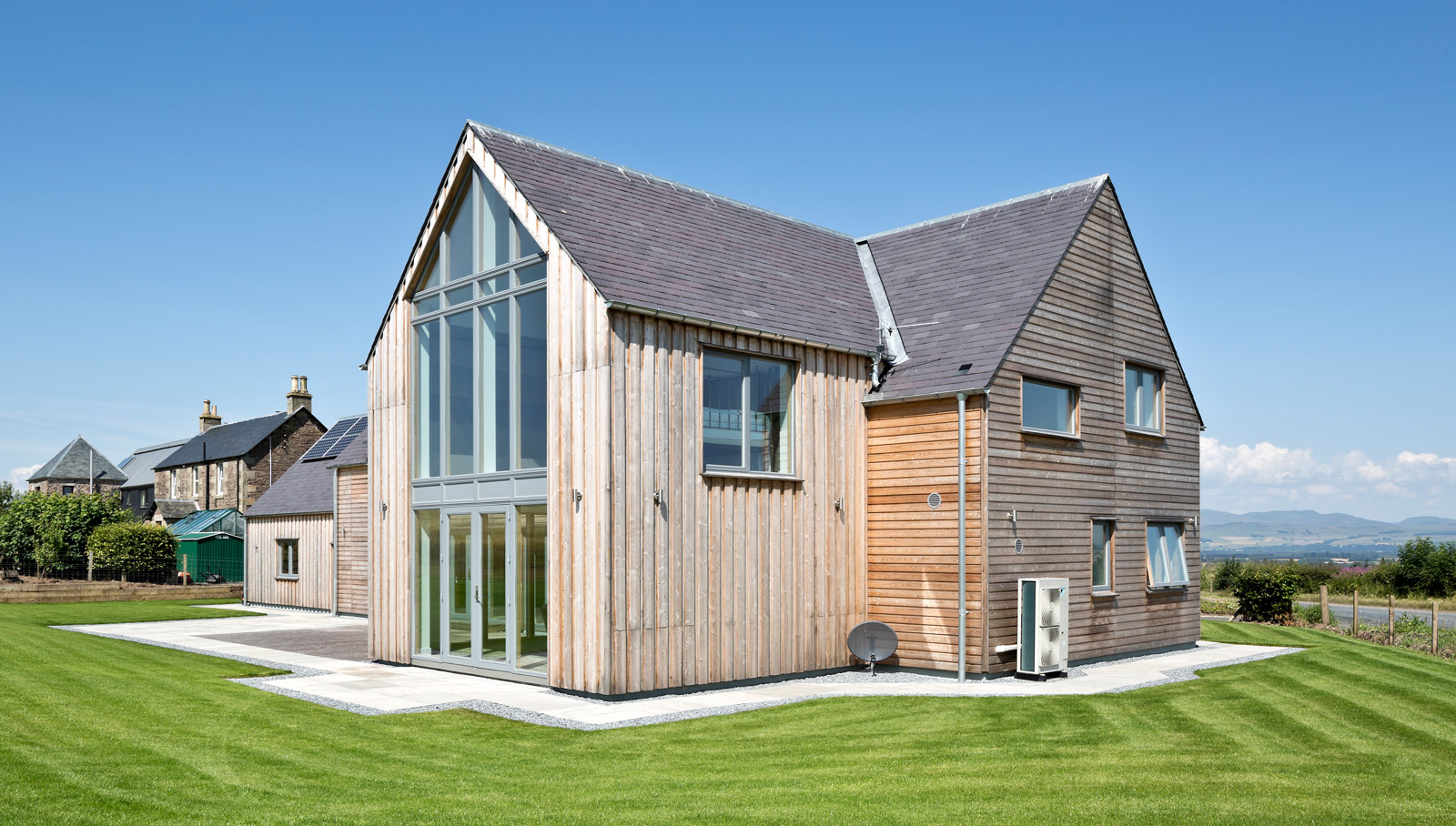To calculate the size of an air conditioner for a house, multiply the length times the width of the space to be cooled and then consider factors like climate, insulation, sun exposure, and ceiling height. Additionally, determining the appropriate BTUs required for the space is crucial.
By following these steps, you can accurately calculate the size of an air conditioner needed for your house. Remember to take into account specific factors that may affect the cooling needs of your space, and consult with a professional if needed. Calculate Air Conditioner Size
Importance Of Correct Ac Size
Choosing the correct size of air conditioner for your house is crucial for creating a comfortable living space. Installing an air conditioner that is too small for your home will result in insufficient cooling and increased energy consumption, while an oversized unit will lead to frequent cycling and poor humidity control. To ensure optimal performance and energy efficiency, it is important to calculate the correct AC size for your house.
Benefits Of Proper Sizing For Energy Efficiency
Optimizing your AC system’s size based on the specific requirements of your house comes with several energy-saving benefits:
▪ Increased energy efficiency: A properly sized air conditioner operates more efficiently, reducing energy consumption and lowering utility bills.
▪ Enhanced cooling performance: The right AC size ensures that your unit can effectively cool your space, maintaining a comfortable indoor temperature even during peak heat.
▪ Reduced wear and tear: Correctly sized AC units run fewer cycles, minimizing stress on the system and extending its lifespan.
▪ Lower carbon footprint: A properly sized air conditioner helps minimize energy waste, reducing greenhouse gas emissions and promoting a greener environment.
Consequences Of Incorrect Ac Sizing
Choosing an air conditioner that is either too large or too small for your house can lead to various issues:
◾ Energy wastage: An oversized AC unit will cycle on and off frequently, consuming more energy than necessary.
◾ Poor humidity control: Oversized units tend to cool the air quickly without adequate dehumidification, resulting in a sticky and uncomfortable indoor environment.
◾ Inadequate cooling: An undersized air conditioner will struggle to cool your home, leaving some areas hot and uncomfortable.
◾ Uneven temperature distribution: Incorrectly sized units may lead to uneven cooling, with certain rooms being cooler or warmer than others.
◾ Increased maintenance costs: An oversized AC system may experience more frequent breakdowns and require costly repairs due to excessive strain on the components.
Assessing Room Dimensions
When calculating the size of an air conditioner for your house, it is important to assess the room dimensions. Measure the length and width of each room and multiply them to get the square footage. This will help determine the appropriate size of the air conditioner needed for efficient cooling.
Importance Of Room Size In Calculation
Assessing the dimensions of a room is a crucial step in determining the proper size of an air conditioner for your house. Room size plays a significant role in the calculation process as it directly affects the cooling capacity required for optimal comfort. A room that is too large for the air conditioner will not cool efficiently, while a small room with a powerful air conditioner can lead to excessive cooling and wasted energy.
How Room Shape Affects Ac Size Requirements
The shape of the room also plays a vital role in determining the AC size requirements. Different room shapes have different cooling needs due to variations in airflow and heat distribution. For example, a rectangular-shaped room with regular walls and minimal obstacles may have more even temperature distribution, making it easier for the air conditioner to cool the space efficiently. On the other hand, irregularly-shaped rooms with angled walls or numerous obstacles may have uneven temperature distribution, requiring a larger capacity AC to ensure adequate cooling in all areas of the room.
Using The Step-by-step Guide
Are you unsure of how to calculate the correct size for an air conditioner in your house? Our step-by-step guide provides an easy and accurate method to determine the right size for your cooling needs. Avoid common mistakes and ensure maximum comfort with our helpful instructions.
Itemizing Tools And Information Needed
Before you start calculating the size of an air conditioner for your house, it’s important to have the necessary tools and information at hand. Here’s what you’ll need:
- A measuring tape to measure the dimensions of each room in your house.
- The floor plan or blueprint of your house, which will provide accurate measurements and details.
- The local climate data, including the average annual temperature and humidity levels.
- Information about the insulation level in your house, such as the R-value of the walls, windows, and roof.
- The ceiling height of each room.
- The number and size of windows in each room.
- Any other heat sources in the house, such as kitchen appliances or electronics.
Step-by-step Calculation Process Details
Once you have all the necessary tools and information, you can follow this step-by-step guide to calculate the size of the air conditioner for your house:
- Calculate the square footage of each room: Measure the length and width of each room and multiply them to get the square footage. Add all the square footage values to determine the total square footage of your house.
- Determine the cooling capacity needed: The cooling capacity is measured in British Thermal Units (BTUs) and is based on the square footage of your house. On average, you’ll need around 20 BTUs per square foot. Multiply the total square footage by 20 to get the cooling capacity needed.
- Adjust for local climate and insulation: If you live in a hot and humid climate or have poor insulation, you may need to increase the cooling capacity by 10-20%. Conversely, if you live in a mild climate or have good insulation, you can decrease the cooling capacity by 10-20%.
- Consider other factors: Take into account any additional heat sources in the house, such as kitchen appliances or electronics. Add an extra 4,000 BTUs for each kitchen appliance and 1,000 BTUs for each electronic device.
- Select the appropriate air conditioner size: Based on the calculated cooling capacity and the additional heat sources, you can now select the right size air conditioner for your house.
By using this step-by-step guide and considering all the relevant factors, you’ll be able to accurately calculate the size of the air conditioner needed for your house. Remember, it’s essential to properly size your air conditioner to ensure optimal cooling efficiency and energy savings.

Credit: www.tcl.com
Considering External Elements
When it comes to calculating the size of an air conditioner for your house, it’s crucial to consider external elements that can impact the cooling requirements. By taking into account factors such as climate, house insulation, windows, and occupancy, you’ll be able to determine the appropriate size and capacity of the air conditioner to ensure optimal comfort and energy efficiency in your home.
Impact Of Climate And House Insulation
The climate you live in plays a significant role in determining the size of the air conditioner needed for your house. In hot and humid climates, where temperatures soar during the summer months, a larger capacity AC unit may be required to effectively cool the space. On the other hand, in moderate or cool climates, a smaller capacity AC unit may suffice.
Another important factor to consider is the insulation of your house. Good insulation helps to maintain cooler indoor temperatures during hot weather and prevents heat loss in colder weather. Proper insulation allows the air conditioner to work more efficiently and reduces the overall cooling load. Insulation is typically measured using an R-value, which indicates the resistance to heat flow. The higher the R-value, the better the insulation.
Understanding The Role Of Windows And Occupancy
Windows have a significant impact on the cooling requirements of a house. They can contribute to heat gain during the summer and heat loss during the winter. It’s essential to consider the type and size of windows, their orientation, and the amount of shading they provide. For instance, south-facing windows receive more direct sunlight, leading to increased heat gain, while shaded windows experience less heat gain.
Occupancy also influences the cooling needs of a house. The number of people living in the house and their daily activities generate heat, which must be accounted for when determining the size of the air conditioner. Higher occupancy levels typically require a larger air conditioner to maintain a comfortable indoor environment.
By considering the impact of climate, house insulation, windows, and occupancy, you can accurately calculate the air conditioner size needed for your house. This ensures the system operates efficiently, keeps your home comfortable, and helps save energy and costs in the long run.

Verifying With A Professional
When it comes to calculating the size of an air conditioner for your house, it can be a complex task that requires careful consideration of various factors. While you can certainly use online calculators and guides to estimate the ideal size of your air conditioner, it is crucial to verify your calculations with a professional HVAC technician or contractor.
The Role Of Hvac Professionals In Verification
HVAC professionals play a crucial role in the verification process when it comes to determining the correct size of an air conditioner for your house. They have the expertise and knowledge to analyze your home’s specific requirements, taking into account factors such as square footage, insulation, ceiling height, and window orientation.
By conducting a thorough analysis of your house, HVAC professionals can ensure that your air conditioning system is neither oversized nor undersized, optimizing the comfort and energy efficiency of your home. They can also consider other factors such as the local climate and any specific cooling needs, such as areas with high heat gain or humidity levels.
When To Seek Help From An Expert
While it may be tempting to rely solely on online calculators or general guidelines, seeking help from an expert is essential to achieve accurate calculations. There are certain instances where it is highly recommended to consult an HVAC professional:
- 1. New construction or major renovations: If you are building a new house or planning significant renovations that may impact the thermal performance of your home, it is crucial to consult with an HVAC professional during the design phase to ensure proper sizing of your air conditioner.
- 2. Unusual home layout or features: If your house has unique features or an unconventional layout that may affect the airflow or cooling distribution, it is best to seek professional advice to accurately determine the size of your air conditioner.
- 3. Complex cooling requirements: If your cooling needs are specific, such as the need for precise temperature control in certain areas or the presence of sensitive equipment, an HVAC professional can help design a system that meets your requirements.
- 4. Energy efficiency goals: If you are keen on maximizing energy efficiency and reducing utility bills, an HVAC professional can guide you in selecting the right-sized air conditioner that balances energy efficiency with cooling performance.
Remember, the size of your air conditioner directly impacts not only your comfort but also your energy consumption and costs. Investing in professional verification ensures that you make an informed decision, optimizing the performance of your air conditioning system and enhancing the overall comfort of your home.

Frequently Asked Questions On How To Calculate Air Conditioner Size For A House?
How Many Square Feet Does A 3 Ton Ac Unit Cover?
A 3-ton AC unit typically covers around 1,200 to 1,500 square feet of space. Consider factors like climate, insulation, sun exposure, and ceiling height when determining the size of the AC unit needed.
How Do I Calculate What Size Air Conditioner I Need?
To calculate the size of air conditioner you need, consider your square footage and compare it to the BTUs needed for that space. Also, take into account factors like climate, insulation, sun exposure, and ceiling height. Air conditioners come in various sizes to suit different needs.
What Size House Will A 3 Ton Air Conditioner Cool?
To determine the size of the house that a 3-ton air conditioner can cool, calculate the square footage of the area and consider factors like insulation and ceiling height. It is important to match the BTUs required by the space to the size of the air conditioner.
How Many Square Feet Does A 2.5 Ton Air Conditioner Cool?
A 2. 5 ton air conditioner can cool approximately 1,000 to 1,200 square feet of space. Factors such as climate, insulation, sun exposure, and ceiling height should also be considered when determining the appropriate size.
Conclusion
To calculate the size of your air conditioner for your house, it’s essential to consider factors like square footage, climate, insulation, sun exposure, and ceiling height. By doing so, you can ensure that you select the right BTU size for optimal cooling efficiency.
Remember, bigger doesn’t always mean better when it comes to air conditioners. Take the time to accurately measure and calculate your needs to find the perfect fit for your home. With the right size air conditioner, you can create a comfortable and cool indoor environment all year round.

I am a Generator & Calculator And Drone specialist writer and blogger based in the USA & UK. I have been working with Generator & Calculator for 4 long years. And I give trips on various Generator & Calculator problems and solutions. I have a lot of experience with Generator & Calculator And I share them here

